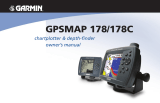
5
Introduction
Table of Contents
Introduction ....................................1-6
Registration ........................................ 1
Warnings and Cautions ...................... 2
FCC Compliance Statement ............... 3
Features .............................................. 4
Table of Contents ...............................5
Unit Features ...................................... 6
Section Two: Reference ................7-54
Initializing the GPS Receiver ............7-8
GPS Information Page ................... 8-11
Map Page ..................................... 12-13
Map Page Setup Options ............. 13-19
Pointer Page ............................... 21-22
Highway Page .............................. 22-23
Active Route/Goto Page .................... 24
Plot Page .....................................24-26
Main Menu ....................................... 26
Trip Computer ............................27-28
Tracks .......................................... 28-30
Waypoints ...................................30-34
Points of Interest ......................... 35
Cities .......................................... 36
Exits ...................................... 36-37
Addresses ................................... 37
Intersections ............................... 38
Routes ................................... 38-42
Proximity .................................... 43
Celestial ...................................... 44-46
MapSource Info ................................
47
Setup Menu- General Tab ............47-48
Setup Menu-Altimeter Tab ................ 49
Setup Menu-Compass Tab ................ 50
Setup Menu-Time Tab ................. 50-51
Setup Menu-Units Tab ...................... 51
Setup Menu-Location Tab ............52-53
Setup Menu-Alarms Tab ................... 53
Setup Menu-Interface Tab ................ 54
Appendices .................................55-71
Appendix A: Specifications ...............55
Appendix B: Wiring & Interfacing ....
56
Appendix C: Time Offsets ................
57
Appendix D: Map Datums ...........58-59
Appendix E: Navigation Terms ....
60-61
Appendix F: Messages .................62-63
Appendix G: Loran TD ................64-65
Appendix H: Accessories ..................66
Appendix I: Index ......................67-70
Appendix J: Warranty .....................
71





















